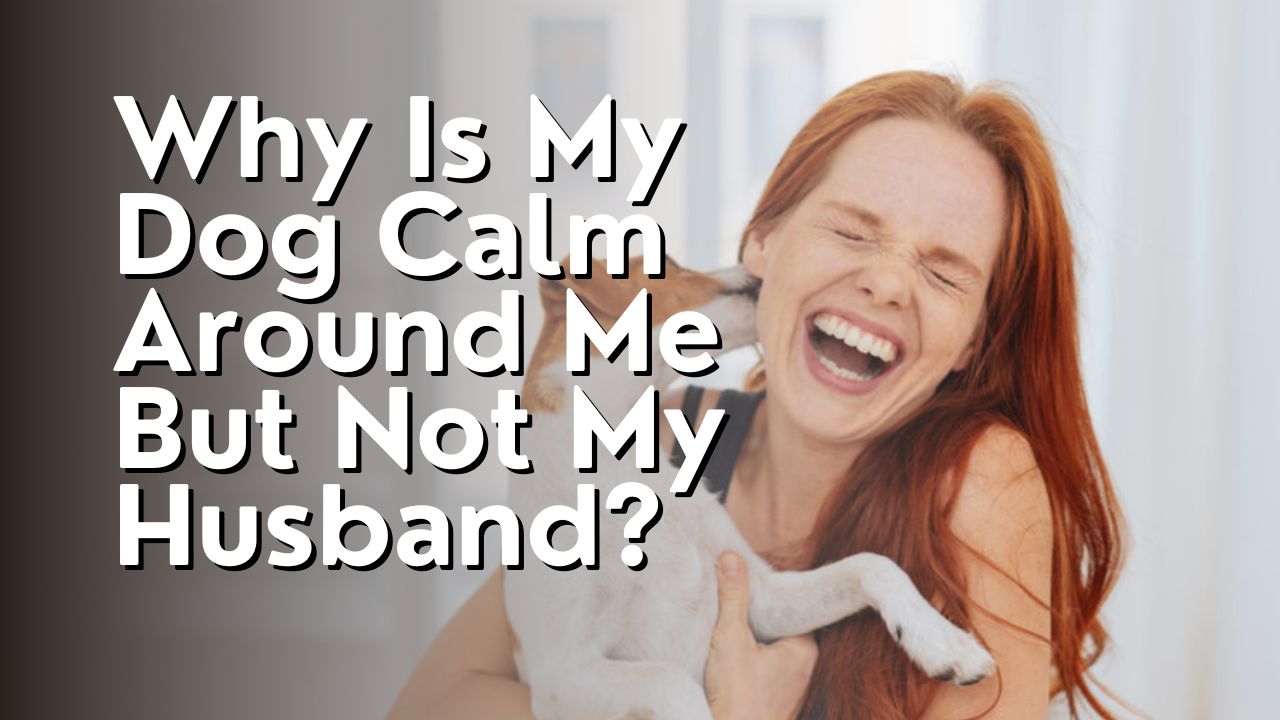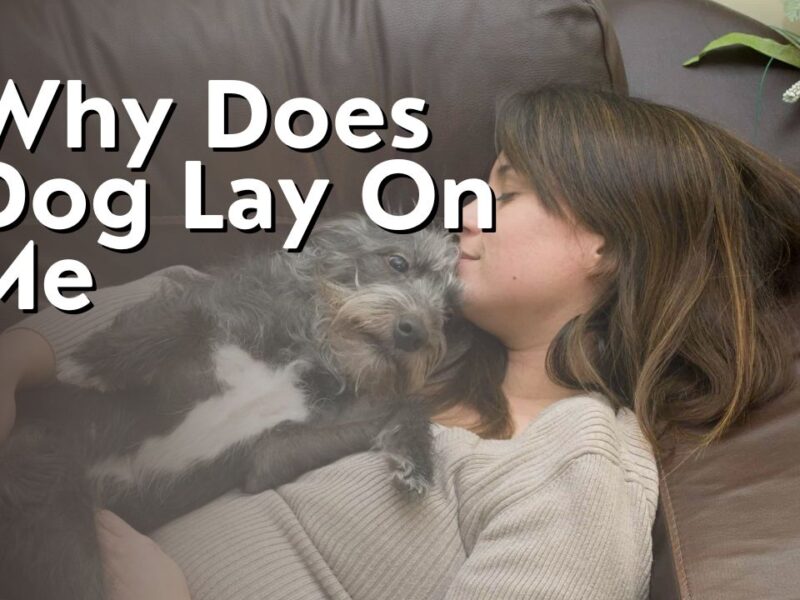I’ve always wondered why my dog behaves differently around me compared to my husband. It’s something that has puzzled me for a while now.
I’ve observed that when I’m around, my furry friend is calm, relaxed, and seems to trust me completely. However, when my husband is in the picture, my dog becomes anxious, scared, and even aggressive at times. It’s a perplexing situation that I want to unravel.
That’s why I decided to delve into the world of canine behavior and try to understand what might be causing this discrepancy. In this article, I will explore the factors that contribute to a dog’s behavior around different individuals and provide some insights on how to build trust and create a harmonious environment for both my husband and our beloved pup.
Understanding Canine Behavior
You might be curious about why your furry friend seems so serene in your presence but not so much around your husband. Understanding canine behavior can shed some light on this matter.
Dogs have unique personalities, just like humans, and they may feel more comfortable and relaxed around certain individuals. One reason why your dog may be calm around you but not your husband could be due to familiarity. Dogs are creatures of habit and they tend to feel more at ease with people they are familiar with.
If you spend more time with your dog, it is natural for them to develop a stronger bond with you and feel more relaxed in your presence. Another factor to consider is the energy and body language that you and your husband emit. Dogs are highly perceptive and can pick up on subtle cues.
If your husband has a more dominant or assertive energy, it might make your dog feel nervous or uneasy. On the other hand, if you have a calm and soothing presence, your dog may feel more at ease around you. It’s also possible that your dog’s behavior around your husband is influenced by past experiences.
Dogs have memories and can associate certain people with positive or negative experiences. If your dog had a negative encounter with your husband in the past, it could explain their uneasiness. In conclusion, there are several reasons why your dog may be calm around you but not your husband.
It could be due to familiarity, energy, body language, or past experiences. Understanding these factors can help you create a more harmonious relationship between your dog and your husband.

Building Trust and Bonding
When it comes to building trust and bonding, it’s important to understand why your furry friend may exhibit different behavior around different people. In the case of my dog being calm around me but not my husband, there could be several factors at play.
One possibility is that my dog may have had a negative experience with my husband in the past, which has caused him to be wary or fearful. It’s crucial to create positive associations between my husband and my dog by providing treats, praise, and gentle interactions.
Another reason could be that my dog feels more comfortable and secure around me because I have been consistently present in his life, while my husband may not have spent as much time with him. To build trust with my husband, we can engage in activities together, such as feeding, grooming, and playing with our dog.
Additionally, my husband can try using a calm and soothing tone of voice, as well as giving my dog space and allowing him to approach at his own pace. By understanding the importance of trust and bonding, we can work together to create a positive and harmonious relationship between my dog and my husband.
Identifying Triggers and Reducing Anxiety
To help your furry friend feel more at ease, it’s important to identify triggers and find ways to reduce anxiety. Dogs can be sensitive creatures, and certain things can make them feel anxious or stressed. By understanding what triggers your dog’s anxiety, you can work towards creating a calm and safe environment for them.
One way to identify triggers is to pay close attention to your dog’s behavior. Notice if there are any specific situations or stimuli that seem to make them more anxious. It could be loud noises, unfamiliar people, or even certain objects. Once you have identified the triggers, you can take steps to minimize their exposure to them.
Reducing anxiety can be done in various ways. One effective method is desensitization. This involves gradually exposing your dog to the trigger in a controlled and positive manner. For example, if your dog is anxious around unfamiliar people, you can start by introducing them to one person at a time in a calm and controlled environment.
Another way to reduce anxiety is through the use of calming techniques. This can include providing a safe space for your dog, using calming pheromone diffusers, or even trying out natural remedies such as lavender or chamomile. It’s important to consult with a veterinarian before trying any new methods.
Remember, reducing anxiety takes time and patience. With consistent efforts and love, you can help your dog feel more calm and comfortable around both you and your husband.
Seeking Professional Guidance
If you’re feeling overwhelmed, it might be helpful to seek professional guidance in order to create a more harmonious environment for your furry friend.
Sometimes, it can be difficult to pinpoint the exact reasons why your dog may be calm around you but not your husband. A professional dog behaviorist or trainer can provide valuable insights and solutions to address this issue.
A dog behaviorist will assess your dog’s behavior and environment to identify any triggers that may be causing anxiety or stress. They will observe your dog’s interactions with both you and your husband, looking for any signs of fear, aggression, or discomfort. By analyzing these behaviors, they can help you understand the underlying causes and develop strategies to reduce your dog’s anxiety.
In addition, a professional can guide you and your husband on how to interact with your dog in a way that promotes trust and relaxation. They can teach you techniques to establish clear boundaries, provide consistent training, and create a positive and supportive environment for your dog.
Remember, seeking professional guidance does not reflect any shortcomings on your part as a pet owner. Rather, it shows your commitment to your dog’s well-being and your willingness to learn and grow as a dog parent.

Patience and Consistency
Developing patience and maintaining consistent routines can greatly contribute to creating a harmonious environment for your furry companion. When it comes to helping your dog feel calm around your husband, it’s important to remember that animals, like humans, have different personalities and preferences. It may take some time for your dog to warm up to your husband, but with patience and consistency, you can help build a positive relationship between them.
Here are three ways you can promote calmness and trust between your dog and your husband:
- Slow and gradual introductions: Allow your dog to approach your husband at their own pace. Encourage your husband to be calm and relaxed, avoiding sudden movements or loud noises that may startle your dog. Gradually increase the amount of time they spend together, always monitoring their interactions and providing positive reinforcement.
- Consistent routines: Dogs thrive on structure and predictability. Establish a routine that includes regular feeding times, exercise, and play sessions for your furry friend. Encourage your husband to participate in these activities, creating positive associations and building trust.
- Positive reinforcement: Reward your dog with treats, praise, and affection whenever they display calm behavior around your husband. Encourage your husband to do the same, reinforcing the idea that being around him is a positive and rewarding experience.
By implementing these strategies and giving it time, you can help your dog feel calm and comfortable around your husband, strengthening their bond and creating a harmonious household.
Frequently Asked Questions
How can I determine if my dog’s calm behavior around me is due to trust and bonding or simply a lack of triggers and anxiety?
I can determine if my dog’s calm behavior around me is due to trust and bonding or simply a lack of triggers and anxiety by observing their body language, response to commands, and overall comfort level.
What are some common triggers that can cause dogs to become anxious or fearful around certain individuals?
Some common triggers that can cause dogs to become anxious or fearful around certain individuals include past traumatic experiences, lack of socialization, unfamiliar scents or body language, and inconsistent or harsh handling.
Are there any specific professional certifications or qualifications I should look for when seeking guidance for my dog’s behavioral issues?
When seeking guidance for my dog’s behavioral issues, it is important to look for professionals with specific certifications or qualifications. This ensures that they have the necessary expertise to effectively address my dog’s needs.
How long does it typically take for a dog to build trust and bond with a new person in the household?
Typically, it takes a dog a few weeks to several months to build trust and bond with a new person in the household. Building trust requires patience, consistency, and positive interactions to create a strong relationship.
Are there any specific training techniques or exercises that can help my husband establish a stronger bond with our dog and reduce their anxiety around him?
To establish a stronger bond with our dog and reduce their anxiety, my husband can try spending quality time with them, engaging in positive reinforcement training, and using calming techniques such as gentle petting and soothing voice tones.
Conclusion
In conclusion, building trust and understanding your dog’s behavior is key to helping them feel calm and comfortable around both you and your husband.
By identifying triggers and reducing anxiety, you can create a safe and peaceful environment for your furry friend.
Seeking professional guidance when needed and practicing patience and consistency in your interactions will also contribute to a stronger bond between your dog and your husband.
With time and effort, your dog will likely become more relaxed and at ease around your husband.


